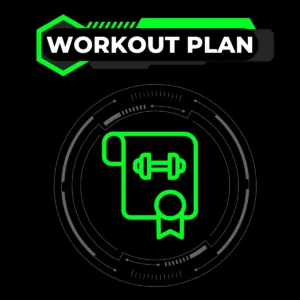Introduction to Decline Dumbbell Press
When you’re chasing that sculpted chest aesthetic, the decline dumbbell press should be your secret weapon. This exercise targets your lower pectorals like a laser-guided missile, creating that coveted ‘armor plate’ definition. As Arnold Schwarzenegger once said,
‘The last three or four reps is what makes the muscle grow. This area of pain divides a champion from someone who is not a champion.’
Bring that mindset to every set as you push through the burn at this challenging angle. Whether you’re preparing for beach season or building functional pushing power, mastering this movement will help you break through plateaus.
exercise review
| Target Muscle Group | Pectoralis Major (Lower Fibers) |
|---|---|
| Exercise Type | Strength, Hypertrophy |
| Equipment Needed | Dumbbells, Decline Bench |
| Force Type | Push |
| Training Level | Intermediate to Advanced |
| Supporting Muscles | Triceps, Front Deltoids |
| Mechanics | Compound |
| Primary Focus | Chest Development, Upper Body Power |
| Typical Duration | 45-90 seconds per set |
| Variation Options | Neutral Grip, Single-Arm, Drop Sets |
Primary Muscle Groups Worked
The decline dumbbell press specifically targets the lower pectoral muscles, the foundation of a well-developed chest. Unlike flat bench variations that emphasize mid-chest development, the downward angle of this movement shifts tension to the lower sternal fibers. This creates that powerful ‘sweep’ from pecs to abs that competitive bodybuilders crave.
Research from the National Strength and Conditioning Association shows decline angles increase lower chest activation by 15-20% compared to flat bench variations. The movement pattern mimics real-world pushing motions like shoving obstacles away from your body at a downward angle – critical for athletes in football or martial arts.
For complete chest development, pair this exercise with our upper chest-focused movements from the Exercise Library. Balance is key – you wouldn’t build a house without a solid foundation!
How to Perform Decline Dumbbell Press Correctly
Set your bench to a 15-30 degree decline. Start light – the angle increases mechanical tension dramatically. Plant your feet firmly under the pads, drive your shoulder blades into the bench (imagine cracking a walnut between them), and maintain a slight arch in your lower back.
Unrack the dumbbells with palms facing forward, lowering them in a controlled arc until your elbows dip slightly below the bench. Press up explosively, focusing on squeezing your pecs at the top. Pro tip: Try rotating to a neutral grip at the bottom of the movement for enhanced lower pec stretch.
A common mistake? Letting elbows flare outward. Keep them at 45 degrees to protect shoulders. Need form validation? Record a side-view video and compare to tutorials from ACE Fitness.
Benefits of Decline Dumbbell Press
Beyond aesthetic gains, this exercise increases functional pressing power for sports requiring downward force application – think wrestling takedowns or rugby scrums. The unstable nature of dumbbells compared to barbells forces greater stabilizer muscle engagement, translating to improved shoulder health.
Studies show the decline position reduces anterior deltoid involvement by 11% compared to flat bench, according to Journal of Strength and Conditioning Research. This allows you to push heavier loads with safer shoulder mechanics – a game-changer for lifters with rotator cuff concerns.
Looking to break through plateaus? Incorporate decline presses at the start of your chest workouts when you’re fresh. The increased motor unit recruitment can spark new growth even in seasoned lifters.
Variations and Progressions
Once you’ve mastered the standard version, try these twists: 1) Neutral grip decline press – reduces shoulder strain while increasing triceps involvement 2) Single-arm alternating press – challenges core stability and fixes imbalances 3) Drop set finishers – strip weight each set to push past failure.
For power athletes, explosive concentric phases followed by 3-second negatives build both strength and control. Bodybuilders can combine this with our incline dumbbell press for complete chest development.
Advanced lifters might add chains or resistance bands to the movement. The accommodating resistance matches your strength curve – maximal tension at lockout where you’re strongest.
Safety and Injury Prevention
The decline position increases blood flow to the head – avoid if you have hypertension or vertigo. Always use a spotter or weight calculators to determine appropriate loads. Wrap thumbs around handles – a false grip with heavy weights could spell disaster.
If you feel strain in the front delts, reduce the bench angle. Chronic shoulder pain sufferers might prefer pec deck variations until mobility improves. Post-workout, prioritize chest stretches and soft tissue work to maintain elasticity.
Alternative Chest-Building Exercises
1. Decline Bench Press – Barbell variation for maximal overload
2. Dumbbell Pullover – Complements chest development with lat engagement
3. Incline Dumbbell Flyes – Stretch-focused upper chest builder
FAQ
How often should I do decline dumbbell presses?
Include them 1-2x weekly in chest workouts, allowing 48 hours recovery between sessions. Pair with vertical pushing movements for balanced development.
Can beginners attempt this exercise?
Absolutely! Start with light weights to master the movement pattern. Consider using a spotter or Smith machine variation initially.
What’s the ideal bench angle?
15-30 degrees – steeper angles shift focus to shoulders. Use our bench angle calculator to find your sweet spot.
Should I go heavier than flat bench?
Most lifters can handle 5-10% more weight due to improved mechanical leverage. But prioritize control over ego lifting!


